The most distinctively Houston sandwich, once ubiquitous, is a cold po boy with a unique airy roll devised several decades ago from a family originally from the Levant that lives on in recommendable form at a couple humble sandwich shops. Concerning popular local sandwiches, there are the Vietnamese banh mi and ones with barbecued beef brisket, both of which are done at least as well here as anywhere. Those brisket sandwiches – though often delicious – are excepted from this list. Every one of the many really good barbecue joints serve a really good beef brisket sandwich, with sliced or chopped brisket, and usually just those two sandwiches. See the best of barbecue section. And banh mi are distinctive and popular enough to warrant a separate section.
There are also excellent versions New Orleans-originated po boys with fried shrimp and the like and muffalettas to be found here. The Mexican tortas, too, though too many versions suffer from inexpensive, preservative-laden bread, but there is at least one place in Houston worth a drive for them. And there are many other types of tasty sandwiches here.
Below are the best places for sandwiches in Houston, listed in order of preference.
The Best
Kraftsmen Bakery & Café (Hot and Cold) – As the retail outlet for a commercial bakery that supplies many of the city’s top restaurants, and operated by a chef who was once named as one of the country’s top ten young chefs by Food & Wine magazine, you can expect that the sandwiches here to be worth the trek to this largely residential section of the Heights in Houston. There’s only about a half-dozen sandwiches here, but all are quite tasty, even a turkey one, The Jive Turkey, which has received some national attention. Heights
Very Good
Roostar (Hot and Cold) – Now with a trio of locations in various parts of town, this Banh Mi 2.0 operation is both slicker and better, overall, than its predecessors. What began as Vietnam Poblano in Spring Branch, an area with a far higher Hispanic and Korean populations than Vietnamese, this has adapted to a growing clientele with a menu and preparations that are broadly popular. Jalapeños, shredded pickled carrots, cucumbers, cilantro with stems, soy sauce and garlic aioli help provide the sandwich platform along with rolls from excellent Slow Dough Bakery that are maybe more traditionally French than is found at other banh mi spots. Not just the bread, but the proteins are also generally better quality than other banh mi purveyors. These are certainly worth a trip, which is now a little easier for many. Spring Branch, Galleria area, East End
Winnie’s (Hot) – Contemporary takes on New Orleans-bred po boys from experienced, skilled chef with Louisiana roots, these slightly upscale and whimsical renditions will likely please any hearty or discriminating appetite. A fun, friendly spot that belies any thought this is a sandwich shop – as tasty as the sandwiches are – there is are also oysters on the half shell, from the East Coast, too, and the capable bar mixes and shakes excellent cocktails, many of which are just $5 before 5:00 every day but Monday when it’s closed. Midtown
Pappa Geno’s (Hot) – Philly cheesesteaks with a Houston accent – thankfully, as the Philly one is quite awful, having lived across the river as a kid – these are the best cheesesteaks in town. Always moist flavorful beef stars in these oft-messy concoctions, with fresh rolls, and in local fashion can be nicely complemented with the Valentina hot sauce in plastic bottles on the table. Montrose, Spring Branch, Timbergrove, Katy (2), Deer Park
Kenny & Ziggy’s (Hot and Cold) – A spiffy, large new spot near the Galleria serving slick renditions of Jewish-American deli food and a sporting a multi-generational deli legacy, this is easily the best place in Houston to enjoy the deli classics, which are all here, including those gut-busting sandwiches. Obscenely large, typically as unhealthy as a sandwich can get by any measure, and often unable to be eaten with your hands, some of these are ridiculously tasty, including the pastrami sandwiches, featuring meat smoked in house. Galleria area.
Mexico’s Deli (Hot) – Excellent, hot Mexican-style sandwiches, which are not only delicious, but a tremendous value is the simple reason to visit here. There are now about forty different tortas here, plus soups, tacos, burritos, alambres, and breakfast, all prepared to order on the flat grills and a meat-laden spinner in the open kitchen found in a humble strip center on Dairy Ashford. Possibly the best tortas in town, it is certainly the most attractive tortaria, and it’s also among the city’s best food values, period. West Houston
Angelo’z Po Boys (Cold and Hot) – Serving the once-ubiquitous Houston-style cold po boy better than anywhere else, these feature an airy, crusty roll filled with a just-enough amount of lunch meats or other fillings, usually a thinly sliced cheese, and complemented with its distinctive piquant chow chow that just works really well when done well. They also assemble a top-notch warm muffaletta, with bread from Royal Bakery, which also supplies the rolls for its po boys. NRG area
Ragin’ Cajun (Hot) – The shrimp po boys – deep-fried, of course – and muffalettas are both the best renditions in the city and each worth a trip here. The other dozen-plus po boys can be very tasty, too. Greenway Plaza
Baguette and Tea (Hot and Cold) – A tiny place in a small strip center with wretched parking on West Alabama across the street from the Ice House, it can also be quite slow to get an order fulfilled here. But the sandwiches, which all come with a light smear of chicken pâté, are so good and such a fine value that it is worth any possible hassle. Reflective of a large part of its clientele, who might have never ventured to Bellaire Boulevard, you might even be asked if you want jalapeño on your sandwich. Montrose
Thien An (Hot and Cold) – A Midtown stalwart, this casual unassuming place opened from mid-morning to early evening is seemingly always bustling during the weekday lunch hours with downtown office workers and a heavy Vietnamese contingent, more so after Sunday Mass. Closed on Saturdays. Its banh mi thit nuong is one of the very best around, as the restaurant is more generous than most with the pork, which is nicely cooked, tender and richly flavorful. Midtown
The Cuban Station (Hot) – The best Cuban sandwich in the area is found here. Made with Cuban-style roasted pork, slices of ham, a judicious amount of thinly sliced of Swiss cheese that’s melted, a bit of similarly thin pickle here and there, mayonnaise and evident yellow mustard on a sturdy, somewhat crusty, admirable fresh bread that’s served warm after a turn in a sandwich press. It is delicious, with the tasty – fairly mild but flavorful – roast pork, which is used the most, setting the tone for the rest of the quality ingredients that work together for an excellent sandwich that might be in a lower-key, but very easy to want the next bite and the next until the substantial construction is no more. There is also a similar Pan de Lechon, a roast pork sandwich, that’s worth ordering plus a dozen other options. East End
Don Café (Hot and Cold) – This modest stand-alone structure along Bellaire Boulevard has served up some of the very best banh mi in Houston for about a couple of decades now, and it remains one of the top values with the sandwiches; still costing just $3.50 or so. Don Café serves all of the requisite Vietnamese sandwiches plus the somewhat unique versions with char-grilled beef (banh mi thit bo nuong). In addition to the sandwiches, there are about two dozen items on the menu and a few brightly colored packaged items near the counter. Though take-away is very popular, you can actually linger here – not that it is that comfortable nor charming – as many of the polyglot patrons do. Chinatown
Revival Market (Hot) – Well-situated in the prosperous Heights, this eatery from the folks at Coltivare, Indianola and others, does additional duty as an artisanal butcher shop, quite helpful for the five sandwiches on the menu that includes a fun, fancy fried baloney one. Not so cheap for what these are, but certainly enjoyable. Heights
Yelo (Hot) – It’s modern Houston banh mi here. Anchored by excellent, fresh and crusty loafs, the smaller-than-usual sandwiches step a little beyond the locally typical banh mi creations. Assembled to order, slowly, and a bit more expensively, this friendly, attractive contemporary little spot in a Katy Chinatown strip center offers easily enjoyable flavors and still-welcome values from a focused menu that still has a number of enticing options. Jalapeños, shredded pickled carrots, cucumbers, cilantro, papaya slaw, garlic aioli along with a smidgen of pâté provide a solid and expected-tasting base for the sandwiches. Katy
Brown Bag Deli (Cold) – This small local chain of small bare-bones sandwich shops, siblings to the Barnaby’s, has been more-than-aptly serving up often delightful built-it-yourself cold sandwiches in a low-key fashion since 2003. Montrose, Heights, Downtown (2), Rice Village, Spring Branch
Paulie’s (Hot) – Featuring hot Italian-inspired sandwiches, both panini-pressed and otherwise, the Italian accents are clear here. These are artfully assembled with obviously quality ingredients such as ripe roma tomatoes, nicely fresh spinach, roasted red peppers and tasty, fresh bread. Montrose
Maine-ly Sandwiches (Hot and Cold) – Maine-style lobster rolls are the main attraction here, but there is also a really tasty chicken salad sandwich, done differently. Served on a buttered and toasted split-top roll, a soft, industrially produced hot dog roll, with everything, it’s the chicken salad, slivers of apples, bits of walnuts, chopped onions, iceberg lettuce, slices of tomato, pieces of bell pepper, pickles, black olives, pickled and jalapeños along with salt and pepper. It is a rather odd and unsightly concoction, but it was quite tasty, mayonnaise-heavy, with a lot more going on than the typical chicken salad sandwich. Spring Branch.
Nickel Sandwich Grill (Hot) – There is barbecue, plenty of deep-fried dishes, seafood, a juicy grilled hamburger, and Cajun items, some of this is served in sandwich form, at two decade-old neighborhood standby on Lyons just north of I-10 in the Fifth Ward. It’s almost all very tasty, and a terrific value. Portions are large and prices are low, and the kitchen here is much better than most similar type of neighborhood places. The sandwiches are served on thick slices of buttered toast that works quite well, and the po boys on a small, crusty baguette-like roll. The Smoked Cajun Turkey and Chopped Beef are a couple of the sandwich stars here. Fifth Ward
To Keep in Mind
The Boot (Hot) – Using the New Orleans favorite Leidenheimer French bread for the po boys makes a
difference, even from par-baked form. Po boys with fried shrimp, catfish, oysters, and crawfish tails might be the most tempting, but you can also get the first two in healthier if still tasty form, grilled or blackened. All these and the others properly fully dressed with mayonnaise, iceberg lettuce, tomato and pickle slices. Heights
Nielsen’s Delicatessen (Cold) – Old school and eschewing those spices and peppers that are popular in much of the world, and here, it’s just bread and sliced meat or another protein, and their tasty house-made mayonnaise. It still works. You can add cheese, lettuce and tomatoes though for a charge for each. Afton Oaks
Ploughman’s Deli & Café (Hot and Cold) – Very friendly little place set in a quiet decades-old strip center with a half-dozen hearty specialty sandwiches on the menu including quite respectable takes on the reuben and meatball sandwiches. You can also create your own in a couple of different sizes from a half-dozen types of bread, nearly as many proteins plus more than enough cheeses – grilled cheese is an option, too – spreads, dressings and vegetables to satisfy nearly any taste. A handful of sides or chips complement, as can the soup of the day, and the sandwich’s great partner, beer on tap in four flavors. Garden Oaks
Common Bond (Cold) – With bread making for much of the quality of the sandwich, it’s not surprising that Houston’s best retail bakery also offers some credible sandwiches. Chicken salad and the Texas Club with turkey, thick bacon, and a bit of avocado and piquant aioli, both served on the ethereal croissants, are two worth a visit to one of its locations. Montrose, Heights (2), Garden Oaks, Medical Center, Downtown, Spring Branch, Spring
Paulie’s Po Boys (Cold and Hot) – Not to be confused with Paulie’s on Westheimer, this one is still owned and operated by descendants of Antone’s and does a great job with that sandwich legacy in similar fashion to Angelo’z. Serving the once-widespread Houston-style cold po boy featuring those airy, crusty rolls filled with lunch meats or other fillings and a smear of the distinctive piquant chow chow and wrapped white paper, these are often sitting ready to grabbed with the low, open refrigerator. West U
Local Foods (Hot and Cold) – Nearly ten sandwiches each day among the garden-fresh and health-oriented (or -signaling) options. These come with the choice of a couple sides or the soup of the day, all higher quality than at most other inexpensive spots, even the chips are house-made. Some of the items, including the sandwiches, are more attractive than they are delicious, though. Rice Village, Upper Kirby District, Heights, Tanglewood
BB’s Café (Hot) – A big attraction here are the New Orleans-style po boys, several deep-fried seafood plus a roast beef one, with a Texas twist – chipotle-infused mayonnaise – done well, and heartily so. Montrose, Upper Kirby District, Heights, Briargrove, Oak Forest, West Houston, Katy, Cypress, Pearland, Webster
Most of a whole muffaletta at Angelo'z
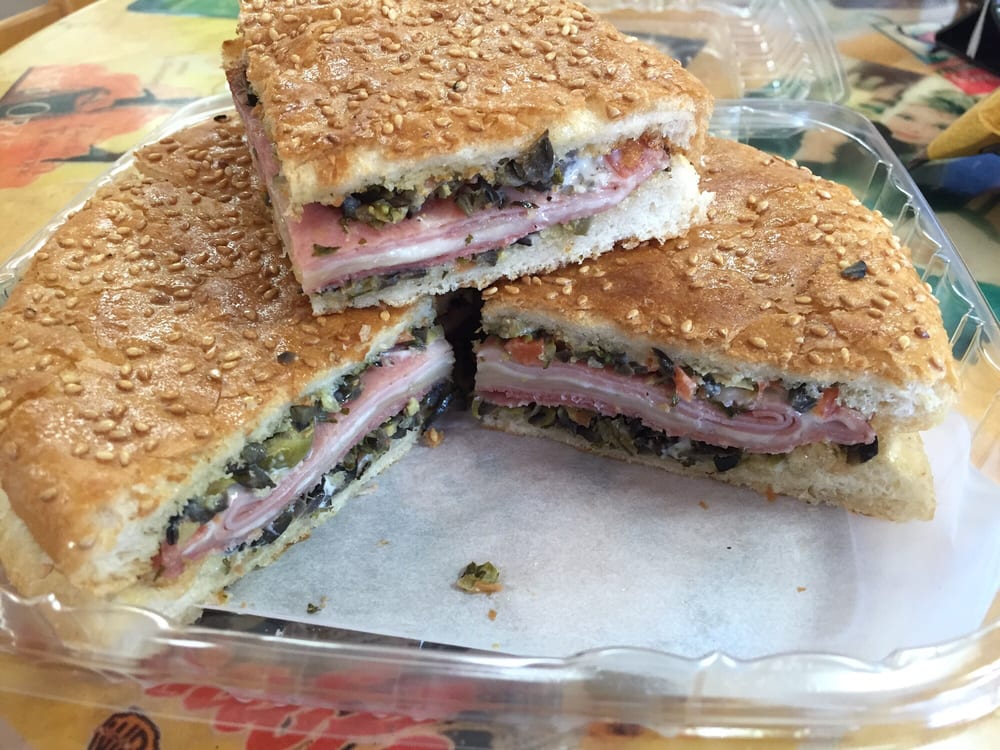

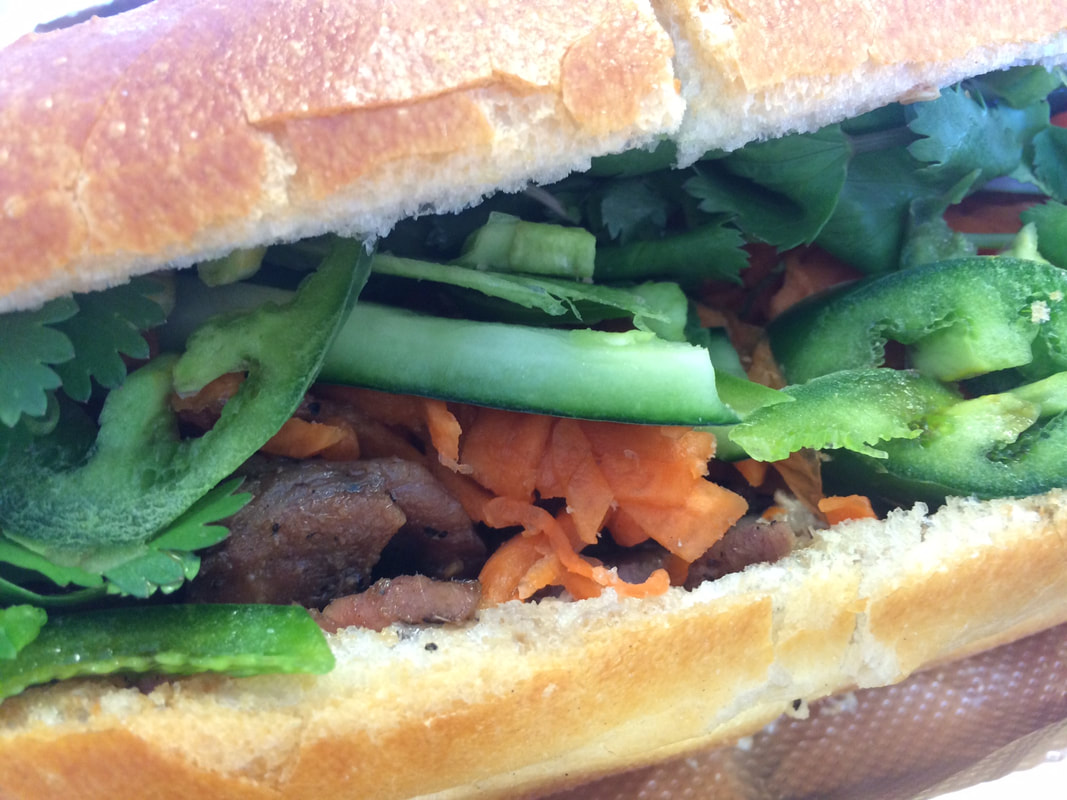
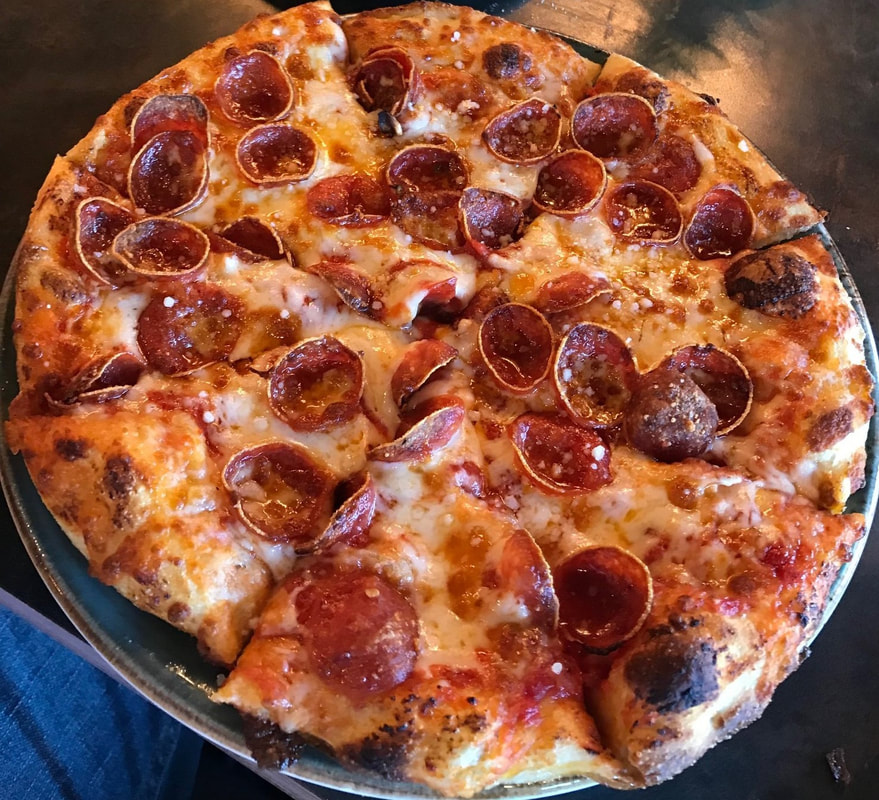
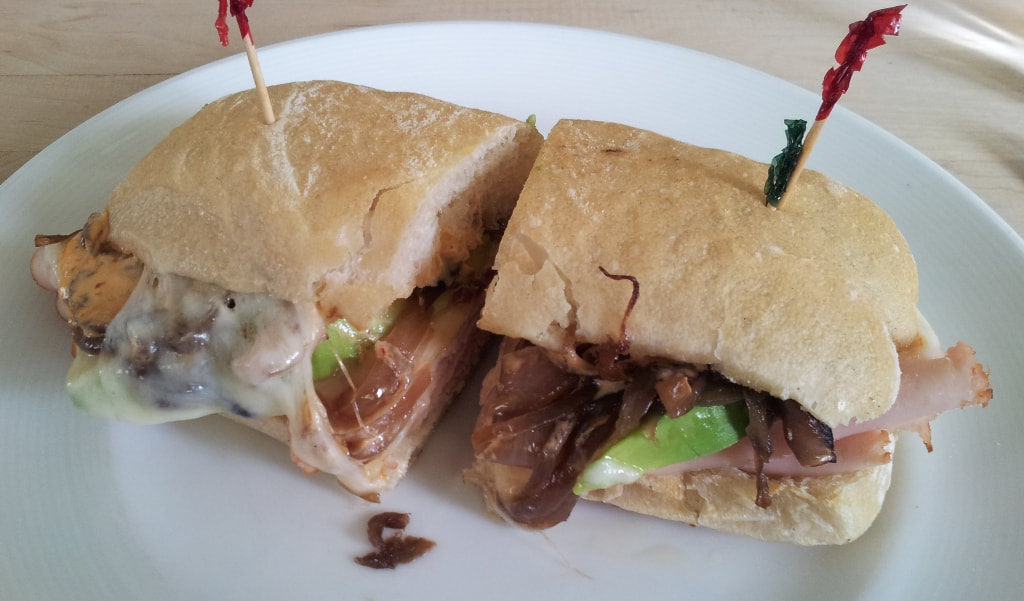
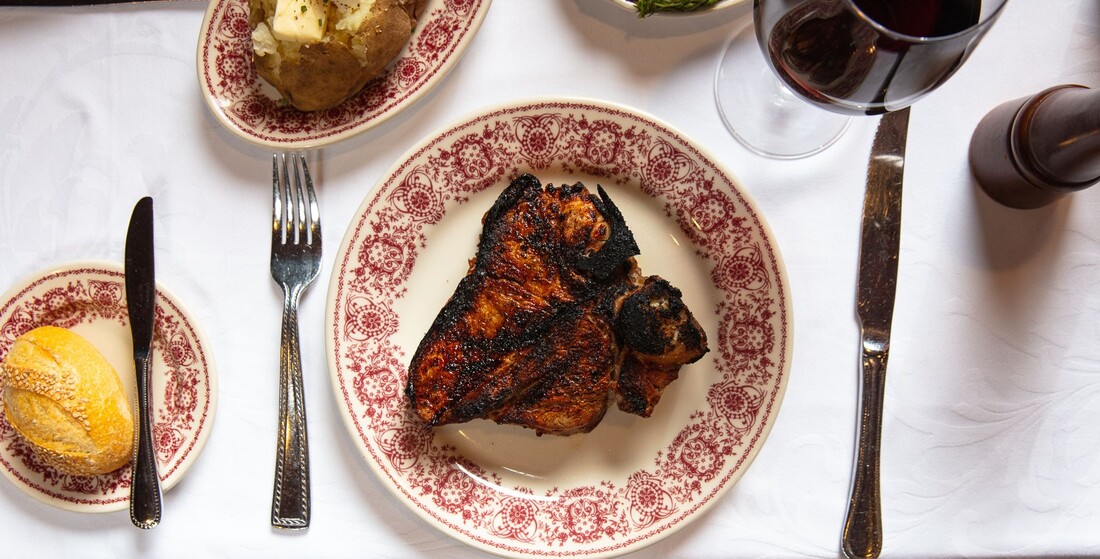
 RSS Feed
RSS Feed

